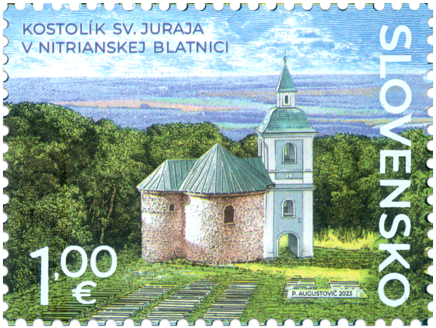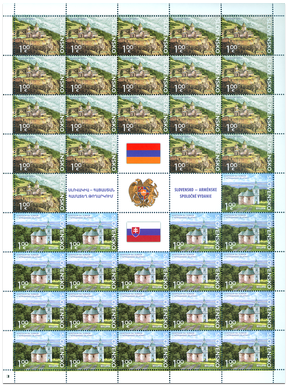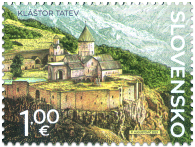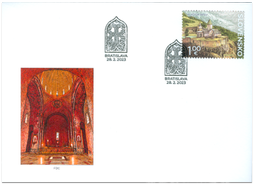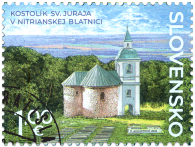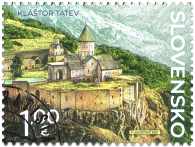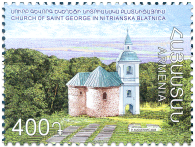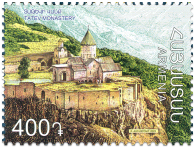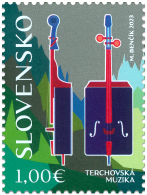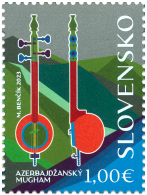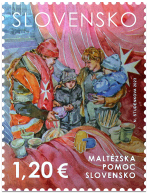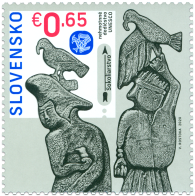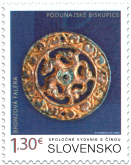788 Date of issue
28.02.2023 Face value
1.00 € Sell price
1.00 €
The stamp is a joint issue with Armenia, to commemorate the 30th anniversary of the establishment of diplomatic relations between our two countries. It depicts the most important Christian monuments of the 9th century, which unite our geographically distant countries through religion. St. George’s Church in Nitrianska Blatnica is located on the defunct early medieval site “Jurko” on the foothills of Marhát Mountain in Považský Inovec. The first historical mention of the village dates back to 1185 as “predium Sarfew”, Stojslav’s property. The rotunda, which stands deep in the forest behind the village, was for a long time considered to be a Renaissance chapel from 1541. It was only during archaeological research, led by A. Ruttkay from 1970ʼs onwards, that it was discovered that the foundations of the building were of early medieval origin. According to findings from the adjacent church cemetery, the first phase of its construction was dated to the 11th century. Research also proved that the tower, presently situated on the western side of the rotunda, was an addition, as a hermitage constructed on the southern side of rotunda.
The proportions of the building, which are identical to the Great Moravian rotunda discovered in the noble courtyard of Ducové near Piešťany, were clues that fed hypothetical discussions that suggested the Great Moravian origin of the building. The authenticity of the rotunda’s early medieval masonry, up to a height of 6 meters, together with the original pre-Romanesque window, discovered during research into the restoration, led by Jozef Dorica from 2010 onwards, made the hypothesis of Great Moravian origin even more probable. The first precise dating of the rotunda was carried out by Peter Barta in 2015 using the C14 chronometric method, he dated it between 991 and 1052. Professor Pavel Povinec came up with quite different results a few years later when he led a consortium of radiocarbon laboratories in dating the church. The consortium was made up of scientific research institutions from Bratislava, Tucson and Athens (USA), Zurich, Vienna, Debrecen and Prague. All these institutions analysed a sample of organic material from the masonry of the church and independently agreed that the church was built in the year 830±40. This leads us to the conclusion that it was built in the 9th century and is the oldest preserved church in Slovakia, it dates back to the time of the Great Moravian Empire.
Martin Vančo
Show less© 2024 POFIS - Postal philatelic service. All rights reserved

